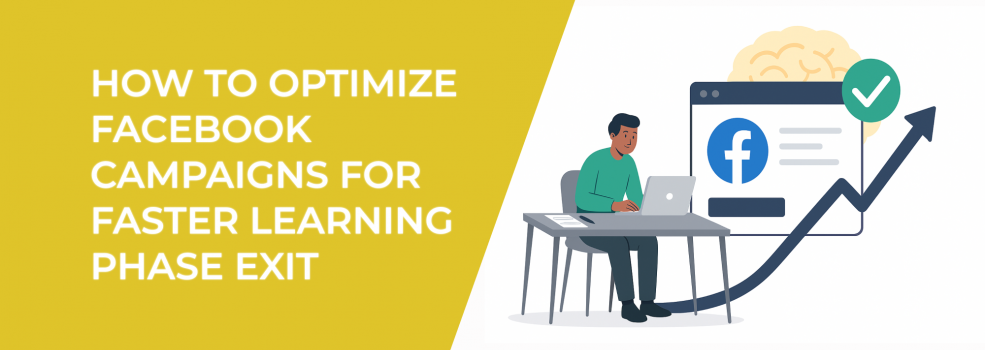Why the Learning Phase Matters
The learning phase is the initial period when Facebook’s ad delivery system gathers data to optimize performance. During this phase, results can be unstable and more expensive. According to Meta, campaigns that exit the learning phase quickly see up to 20% more stable results and 18% lower CPA compared to those that remain in learning too long.
Exiting the learning phase quickly allows Facebook’s machine learning to optimize your ad impressions, CTR, and ROAS much faster—saving you both time and budget.
Key Triggers That Prolong the Learning Phase
Understanding what keeps your ads stuck in the learning phase is the first step toward fixing it. Common triggers include:
-
Too frequent changes to ads or ad sets
-
Low daily budget
-
Narrow audience targeting
-
Unstable Facebook ad optimization settings
Up to 66% of your Facebook ad budget can be wasted during the learning phase—optimize early with enhanced tracking and better campaign structure.
For a deep dive into issues like these, check out our guide on Facebook Ad Mistakes – All You Should Know About.
Proven Ways to Optimize Campaigns for a Faster Learning Phase Exit
1. Use Broad Audiences Combined with Lookalike Segments
Overly narrow audiences restrict Facebook’s algorithm. Instead, combine broad targeting with custom audiences or lookalikes built using tools like LeadEnforce. This balances precision with scale.
2. Set a Realistic Conversion Window
Avoid using conversion windows that are too short, such as 1-day click. This restricts learning. Instead, use 7-day click or 1-day view to help Facebook gather data more accurately.
3. Optimize for Volume: 50+ Conversions per Week
Meta recommends at least 50 conversion events per week per ad set. Use campaign budget optimization to distribute budget efficiently and boost your average click-through rate on Facebook ads.
Check out Simple Questions for Measuring Facebook Ad Effectiveness for helpful KPIs to monitor.
4. Minimize Edits to Campaigns
Frequent edits—especially to creatives, budgets, or targeting—can reset the learning phase. Instead, batch changes and implement them strategically.
5. Enable Advantage Campaign Budget
Using Advantage Campaign Budget (formerly CBO) can improve ad delivery efficiency, allowing Facebook to learn quicker and optimize spend where it's most effective.
Step-by-step Facebook learning phase exit strategy using budget optimization, custom audiences, and campaign setup techniques to boost Facebook ad performance.
Metrics to Track While Exiting the Learning Phase
Focus on the following to measure success and trigger exit from the learning phase:
-
Cost per result
-
CTR
-
Frequency
-
Impressions
-
Conversion rate
If these numbers stabilize after 3–5 days with no major edits, you're likely out of the learning phase.
Tools to Accelerate Optimization
Platforms like LeadEnforce can speed up audience discovery and segmentation. By providing custom audiences built from real social graph data, LeadEnforce helps you bypass the guesswork and deliver higher-quality leads.
Final Thoughts
Optimizing your Facebook campaigns to exit the learning phase faster is crucial for sustained ad performance. By using advantage campaign budget, targeting lookalike audiences, and minimizing edits, you give Facebook the consistency it needs to optimize delivery.
For even better results, integrate LeadEnforce into your strategy to unlock more precise audience data and improve Facebook ad performance.
Explore more insights on our LeadEnforce Blog and stay ahead of the competition.

